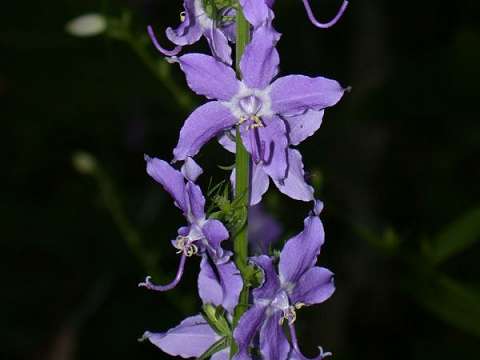

Campanula americana - (image 1 of 5)
Taxonomy
Family: Campanulaceae
Habitat
Moist open woodlands, woodland borders and shaded floodplains.
Associates
Acer saccharum, Celtis occidentalis, Eupatorium rugosum, Geum canadense, Hydrophyllum appendiculatum, Ostrya virginiana, Podophyllum peltatum, Prunus serotina, Tilia americana, Viola pubescens.
Distribution
Ontario west to MN, south to FL and OK.
Morphology
Winter-annual or biennial with milky sap; stems erect, often branching, to 2 m. Leaves alternate, thin, serrate, lanceolate, acuminate, tapered at base, 7-15 cm including petiole. Flowers blue, in elongate terminal spikes; corolla rotate, 2.5 cm wide; sepals linear, spreading, 5-10 mm; style curved downward with an upcurved tip.
Notes
Flowers early July to early November
Wetland indicator: Facultative
The blue flowers in late summer woods are eye-catching.
References
Gleason, Henry A. and A. Cronquist. 1991. Manual of Vascular Plants of Northeastern United States and Adjacent Canada. Second Ed.
The New York Botanical Garden. Bronx, NY
Swink, F. and G. Wilhelm. 1994. Plants of the Chicago Region.
Indiana Academy of Science. The Morton Arboretum. Lisle, Illinois.
|
© Michael Hough 2004 |